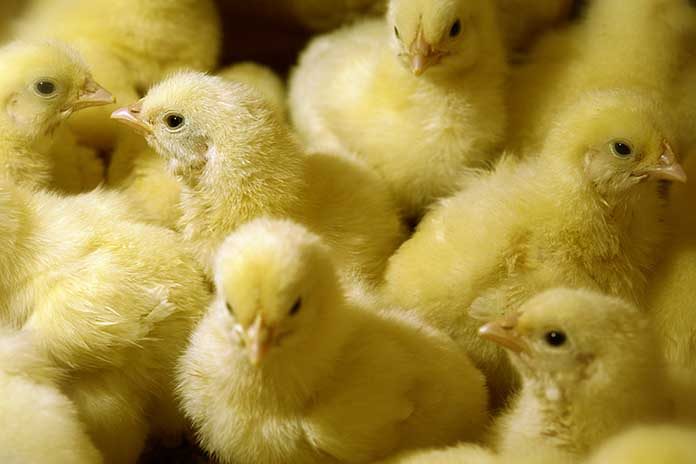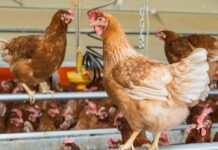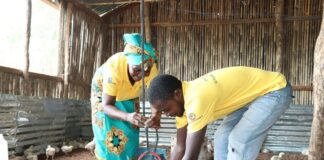
During the incubation period, embryonic growth and development are affected by different factors, as breeder age, the incubation temperature and the availability of egg nutrients, which reflect on chicks quality.
It is established that the age of the parental breeder flock has an effect upon embryonic hatchability and subsequent weight. Eggs and 1-day old chicks from young breeders generally show, respectively, a reduced hatchability and a lower weight compared to ones from older breeders. Differences in broiler age have also an influence on yolk size and consequently on the nutrient availability, since yolk nutrients function as the main nutritional supply providing approximately 90% of the total energy requirement. Investigations on different broiler strains demonstrated that yolk weight was up to 3.8g higher in older flocks with positive effects on embryonic development (Nangsuay et al., 2016).
Temperature is one of the most important factors during incubation because embryos act as poikilothermic, which means that embryonic development and nutrient metabolism during this period are temperature dependent. The incubation temperature can affect embryo development, hatchability and post-hatch growth and performances of broilers (Hulet et al., 2007). Since air temperature is not representative of the internal embryo temperature and measurement of embryo temperature requires destructive methods that influence its subsequent development and hatchability, the eggshell temperatures (EST) is used as a reflection of embryo temperature (Lourens et al., 2005). Literature indicates that a constant EST of 37.8 °C results in good quality birds (Lourens et al., 2005); temperatures too high or too low can increase embryo mortality and have negative effects during the post hatch period.
Temperatures >38 °C during early incubation days might have an initial beneficial effect on embryonic growth. However, the maintenance of high EST during the whole incubation period has a negative impact on embryonic development, resulting in birds of regular weight and length, but with retarded growth of internal organs. Investigations demonstrated that embryos, which initially have been accelerated in growth rate by a high EST, might at the end of incubation be unable to maintain nutrient metabolism at the level required to have a sufficient energy supply for development and growth.
Furthermore, the accelerated growth rate at high EST can result in embryos reaching an oxygen-conductance-limited stage, where, although sufficient nutrients are available, yolk utilization will be decreased due to limited oxygen availability on tissue level and subsequently yolk uptake will be affected (Nangsuay et al., 2016). Same authors have reported that chicks from high EST are more likely to have higher residual yolk sac (up to 1g) compared to ones from EST ≤37.8 °C, to the detriment of the growth of internal organs (Nangsuay et al., 2016).
Considering that chicks still react as a poikilotherm until the first 3-4 days of life, the environmental temperature is of fundamental importance also during the post-hatch phase. After a couple of days, the chick becomes more homeothermic, i.e. it can adjust its heat production to ambient temperatures and, thus, withstand a lowering of its body temperature as a consequence of a drop in the ambient temperature. There is some evidence that the change from poikilothermy to homeothermy in the chick can be influenced by the lipid composition of the yolk; therefore, considering that broilers age can affect yolk size, the regulation of heat production during the first days of life is different for birds from young breeders versus older breeder flocks.
For chicks from a young breeder flock, (till 35 weeks) the transition to a fully developed heat regulating system lasts about 24 to 48 hours longer compared to ones from an older flock. Furthermore, it has been demonstrated that after a cold exposure the reduction of rectal temperature was more pronounced in chicks from young breeders than in ones from old flocks (Weytjens et al., 1999). Therefore, brooding temperatures for birds from a young breeder flock should be set higher and maintained for a longer period in order to prevent a thermic discomfort where they may reduce food intake with negative consequences for body weight, immune system or even detrimental effects on first week mortality and subsequent performance.
Ideally, all birds should have body temperatures between 39.5 and 40.5 °C, regardless of housing system, breeder age, transportation conditions, time, etc. Measuring chick naval temperatures with an infrared ear thermometer is easy to do and provides powerful information on how to give the best possible start.
Also, at the broiler farm temperature measurements can provide useful information about the floor temperature distribution across the house and the effects on chick naval temperature. To maintain body temperature between 39 and 39.5 ˚C, environmental temperature should be kept between 30.5 and 36 ˚C for solitary chicks and between 28 and 30 ˚C for those in boxes. When body temperatures become too high, they will start gasping for air in order to cool down by the evaporation of water. At low body temperatures, birds huddle against each other to minimise their total surface in order to prevent excessive heat loss. If body temperatures are outside their tolerance limits, day-old chicks will express their inconvenience by screaming and by moving around (Lourens and Kuijpers, 2002). In a comfortable brooding temperature, chicks should always be doing the following: some eating, some drinking, some resting, some playing, evenly spread and they will show less mortality and better performance.
References
- Hulet, R. et al. (2007) ‘Influence of egg shell embryonic incubation temperature and broiler breeder flock age on posthatch growth performance and carcass characteristics’, Poultry Science, 86(2), pp. 408–412. doi: 10.1093/ps/86.2.408.
- Lourens, A. et al. (2005) ‘Effect of eggshell temperature during incubation on embryo development, hatchability, and posthatch development’, Poultry Science, 84(6), pp. 914–920. doi: 10.1093/ps/84.6.914.
- Lourens, A. and Kuijpers, M. (2002) ‘Control temperature of young chicks to reduce mortality’, World Poultry, 18(11), pp. 24–26.
- Nangsuay, A. et al. (2016) ‘Effects of breeder age, broiler strain, and eggshell temperature on development and physiological status of embryos and hatchlings’, Poultry Science, 95(7), pp. 1666–1679. doi: 10.3382/ps/pew080.
- Weytjens, S. et al. (1999) ‘Thermoregulation in chicks originating from breeder flocks of two different ages’, Journal of Applied Poultry Research, 8(2), pp. 139–145. doi: 10.1093/japr/8.2.139.

















